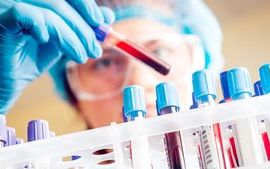- Published:
- 08 September 2023
- Author:
- Dr Melanie Newbould & Dr Helen Craggs
- Read time:
- 8 Mins
The key standards measured in this audit are as follows.
- Standard 1A: All perinatal post-mortem examinations at the Royal Manchester Children’s Hospital (RMCH) to take place within 3 working days of receipt of the body in the RMCH mortuary.
- Standard 1B: All perinatal post-mortem examinations at RMCH to take place within 5 working days of receipt of the body in the RMCH mortuary.
- Standard 2: All perinatal post-mortem examinations at RMCH have genetic testing performed (where consent has been given).
- Standard 3: All perinatal post-mortem examination cases have a correctly completed post mortem consent form.
In this audit, the term ‘missed miscarriage’ refers to any baby dying in utero between 12 weeks gestation and 23+6 weeks gestation. ‘Antepartum stillbirth’ refers to an infant dying in utero after 24 or more weeks gestation.
Perinatal post-mortem examination is the specialist medical examination performed after the death of a baby or fetus dying in utero between 12 to 40 weeks gestation or an examination of an infant dying after 28 days of post-natal life or less. The RMCH mortuary is the regional centre for perinatal post-mortem examinations in the North West of England. Approximately 300 perinatal post-mortem examinations are undertaken each year at RMCH.
This audit builds upon several previous audits of the perinatal post-mortem examination service at RMCH, including the 2019 audit 7949 Use of genetic testing in perinatal post mortem examinations. In Audit 7949, we examined genetic testing in perinatal post mortems and identified that 13.5% of cases included in the audit identified genetic abnormalities. Genetic anomalies were identified in 12.5% of missed miscarriages, 19% of terminations of pregnancy for fetal reasons and 15% of antepartum stillbirths. Therefore, it was decided that, certainly in these case types, genetic testing was likely to yield useful data and should be adopted for the majority of cases for which there was parental consent.
There are no national standards on how long a body should take to reach the mortuary where a post mortem is to take place, as this can be affected by many circumstances. However, a long interval between delivery and transport to RMCH leads to a delay in post-mortem examination; this may reduce the usefulness of some investigations, such as genetic testing.
Overall, there are relatively few extant national standards for how long a perinatal post-mortem examination should take to complete. The Perinatal Commissioning Document of 2013/2014 suggested that ‘post-mortem examinations may take up to 5–7 working days to complete when the brain needs to be fixed for proper examination. Examinations should be completed within 3 days after receipt of the body if no special examination is required.’
Central perinatal pathology commissioning has not been adopted. As a result, the above is not a current national standard. It could, however, be considered a helpful guide and forms a standard used in this audit.
Microarray, microsatellite testing, specific gene testing and whole genome defects are possible. For most post-mortem examinations, microarray and microsatellite testing are the most frequently used tools. Specific gene testing and whole genome sequencing are performed in certain clinical circumstances.
The post mortem consent form is carefully checked before a body is accepted for post mortem and any corrections are made at this point. It is also checked thoroughly before the post mortem starts. Therefore, there should be no errors at all if there has been a post mortem. However, it remains useful to audit to clarify that the systems in place for checking this are working.Basic data
The 125 consecutive perinatal post mortems performed during first 6 months of 2021 form the basic data for audit 9476.
The basic data for audit 7949 consisted of 143 consecutive perinatal post-mortem examinations performed during 2017.
Time between birth and arrival at RMCH mortuary
AUDIT 9476: Days from birth to receipt of body varies from 1 to 24 days. The overall mean is 7 days.
Time between arrival in the mortuary and post-mortem examination in 2021
Looking at working days between arrival of the body and post-mortem examination, the range was between 0 days and 11 days – with a mean and mode of 2 days.
Standard 1A: In this sample, 67% of cases had a post mortem completed 2 working days or less after arrival and 88% had a post mortem completed 3 working days or less following arrival.
Standard 1B: In this sample, 98% of cases had completed post mortem examination 5 working days or less following arrival.
Overall time between delivery and completion post mortem
Days from delivery to post mortem varies from 4 to 27 days. The overall mean is 10 days.Standard 2: How many cases were subjected to genetic testing?
In the 125 cases included in this audit, 123 had consent for genetic testing and it was carried out in 120 cases (Table 1). In 2 it was not carried out for clinical reasons and in 1 case degenerative changes meant that no tissue could be sampled. Therefore, for Standard 2, 98% of perinatal cases in this standard had some form of genetic testing.
Table 1: Number of cases (by case type) in which genetic testing was carried out in 2021, compared to number having genetic testing in the 2019 audit 7949.
| Type of case | Total number | No. with consent for genetic testing | No. that had genetic testing | % having some sort of genetic testing | % genetic testing in previous audit collected in 2019 (audit 7949) |
|---|---|---|---|---|---|
| Antepartum stillbirth | 26 | 25 | 25 | 100 | 37 |
| Missed miscarriage | 31 | 31 | 30 | 97 | 70 |
| TOP | 45 | 45 | 45 | 100 | 87 |
| Spontaneous miscarriage | 13 | 12 | 12 | 100 | 31 |
| Fresh stillbirth | 3 | 3 | 2 | 66 | 25 |
| Neonatal death | 7 | 7 | 6 | 86 | No cases included |
| Total | 125 | 123 | 120 | 98 | 57 |
The proportion of cases having genetic testing is greater than in the previous audit 7949, where, looking at all types of case, 57% had some form of genetic testing.
In what type of case were the abnormalities identified?
Abnormalities were more common in infants following termination of pregnancy, the great majority of which (over 95% in this series) were carried out for fetal rather than maternal reasons (Table 2). There were also genetic abnormalities identified in the antepartum stillbirth and missed miscarriage group, but there were no abnormalities in the small fresh stillbirth group or the spontaneous miscarriage group (this was also the case in Audit 7949).
Table 2: Number of cases in which genetic testing revealed abnormalities (by case type) in 2021, compared to number of cases in which genetic testing revealed abnormalities (by case type) in the 2019 audit 7949.
| Type of case | Results available | Normal | Abnormalities present (any test) | % Abnormalities in Audit 9476 | To compare % abnormalities in Audit 7949 |
|---|---|---|---|---|---|
| Antepartum stillbirth | 24 | 22 | 2 | 8% | 15% |
| Missed miscarriage (FDIU) | 30 | 27 | 3 | 10% | 12.5% |
| TOP | 45 | 28 | 17 | 38% | 19% |
| Spontaneous miscarriage | 11 | 11 | 0 | 0% | 0% |
| Fresh stillbirth | 2 | 2 | 0 | 0% | 0% |
| Neonatal death | 5 | 5 | 2 | 40% | None in sample |
| Total | 118 | 95 | 24 | 20% | 13.5% |
Microsatellite testing
There were 2 cases in the whole series in which microsatellite testing failed. Both of these involved tissue taken at post mortem. In both cases, the interval between delivery and post mortem was over 20 days.
Microarray testing
There were 13 cases in which complete failure in microarray testing is documented.
Microarray was
-
100% successful whatever tissue was taken if sampled up to 6 days following delivery in this small series
-
60–70% successful 7–20 days after delivery.
-
No genetic testing was successful if 20 or more days had elapsed between delivery and sampling.
Basically, this means that microarray is more likely to be successful if the sample is taken close to the time of delivery, as expected.
As demonstrated in this audit, the mean time for transportation from the hospital of birth to RMCH is 7 days and the mean time from delivery to post mortem is 10 days, so it is likely that there will be failures in genetic testing, particularly microarray, if the tissue used for testing is taken at post mortem and not around the time of delivery.
100% of cases audited did have a correctly completed consent form, as expected.
With the present delays in transportation from the hospital at which delivery took place to RMCH for post mortem, it should be communicated to the obstetric units concerned that it is more likely that genetic testing will be possible if they ensure that a cord sample taken around the time of delivery is sent directly to genetics.
It is expected that samples taken close to the time of delivery are more likely to yield successful genetic results, meaning parents can be provided with more detailed information.
Return to July 2023 Bulletin homepage
Read next



